Select Works of Charles Dickens (7 vols.)
Digital Logos Edition
This product has been transferred from Community Pricing to Pre-Pub. The actual funding level may be lower than it appears, which could delay production. The amount of funding still needed will be evaluated and updated soon.
Overview
Charles Dickens is widely recognized for his literary genius. Hailed as one of the greatest novelists to ever live, Dickens wrote the best-selling novel of all time and a novella that remains one of the most influential works of literature ever written. His works gave a voice to the poor and the marginalized, challenging readers to see the world with compassion, pity, and outrage. Dickens created characters to cry out for social reform and challenge cultural norms. The serial installments of his novels stirred his readers like no other literature ever had—for the final installment of The Old Curiosity Shop, crowds of people gathered around the docks as the first shipment arrived in New York, begging to know the ending. Upon reading it, the Irish politician Daniel O’Connell is said to have burst into tears and thrown the novel out of the train he was on.
The Select Works of Charles Dickens contains seven volumes of his most memorable works, including Great Expectations and The Uncommercial Traveller, A Tale of Two Cities, The Adventures of Oliver Twist, Bleak House, The Old Curiosity Shop, The Posthumous Papers of the Pickwick Club, and Sketches by Boz. These classic works have something to offer readers of all ages.
In the Logos editions, these volumes are enhanced by amazing functionality. Important terms link to dictionaries, encyclopedias, and a wealth of other resources in your digital library. Powerful searches help you find exactly what you’re looking for. Tablet and mobile apps let you take the discussion with you. With Logos Bible Software, the most efficient and comprehensive research tools are in one place, so you get the most out of your study.
Key Features
- A variety of works by one of the most significant novelists of all time
- The best-selling novel of all time, A Tale of Two Cities
- Some of the most influential works of literature ever written
Praise for Charles Dickens
. . . I believe him the greatest of all novelists who have ever written in English.
—Belford’s Magazine
Product Details
- Title: Select Works of Charles Dickens
- Author: Charles Dickens
- Volumes: 7
- Pages: 3,661
Individual Titles
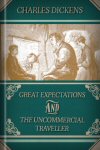
In this classic coming of age story, a young orphan named Pip encounters an escaped convict and finds himself caught up in a life he never imagined was possible. Today, the novel is an excellent example of Victorian literature, and remains popular throughout the world. Great Expectations showcases Dickens’ masterful dialogue and endearing humor.
All of one piece and consistently truthful.
—George Bernard Shaw, twentieth-century literary critic
Dickens’ humor, not less than his creative power, was at its best in this book.
—John Forster, English biographer and critic
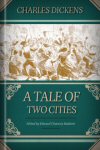
A Tale of Two Cities is one of the world’s most famous works of literature. The novel has sold over 200 million copies. It is one of Dickens’ two historical fiction novels, and is considered the least humorous of his works, but it powerfully presents English and French social structure, class separation, and the French Revolution. The novel is one of the most widely studied works in the canon of Western literature.
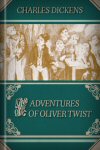
The Adventures of Oliver Twist is Charles Dickens’ second novel. Loaded with sarcasm and harsh cultural criticism, the novel addresses gruesome child-labor practices and the horrifying recruitment techniques used to turn street children into criminals. The title character, Oliver Twist, escapes a workhouse only to find himself in the middle of a gang of child criminals, led by a twisted man named Fagin.
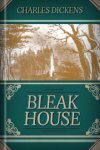
Bleak House is considered one of Dickens’ best novels. Dickens colorfully exposes the flaws of the judicial system, partially based on his previous experience as a law clerk. Bleak House awakened a movement which eventually achieved legal reform. The story features an immense cast of characters, including over 20 major characters and 40 minor characters, many of which are based on real people.
Bleak House is not certainly Dickens’ best book; but perhaps it is his best novel . . .
—G. K. Chesterton, literary critic
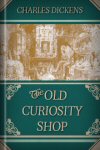
The Old Curiosity Shop follows the story of a young orphan named Nell Trent, who lives in London with her grandfather at The Old Curiosity Shop. Like many nineteenth-century novels, the story was published in weekly installments. Nell was so endearing to the public that when the ship arrived in New York with the final installment, readers swarmed the sailors, begging to know how the novel ended. Upon reading the end of the novel, Irish politician Daniel O’Connell is said to have burst into tears and thrown the book out the window of the train he was on.
. . . very interesting and cleverly written.
—Queen Victoria
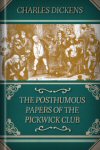
The Posthumous Papers of the Pickwick Club, also known simply as The Pickwick Papers, was Charles Dickens’ first novel. The story follows the Pickwick club, and the clumsy misadventures of its members.
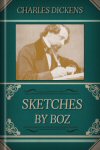
Sketches by Boz is a collection of over 50 short stories depicting everyday life and everyday people in London. “Boz” was Charles Dickens’ enigmatic pen-name, which he used often early in his career.
About Charles Dickens
Charles John Huffam Dickens (1812–1870) is the greatest novelist of the Victorian period. Dickens exploded onto the literary scene with The Pickwick Papers, and quickly became the most popular novelist of his time. He has created some of the most memorable characters in literature, and his moving stories remain immensely popular today. Dickens wrote 15 novels, five novellas, and hundreds of short stories and nonfiction articles. His works offered humorous characters and profound social commentaries, and Dickens actively advocated for children’s rights and social reform. Bleak House was particularly effective in stirring social change, eventually leading to a reform of the judicial system it criticized. Dickens’ novel A Tale of Two Cities is the best-selling novel of all time, and his novella A Christmas Carol is regarded as one of the most influential works of literature. His works have never gone out of print and have been reproduced in over 200 adaptations.
Reviews
0 ratings



Rosie Perera
2/13/2014
What about David Copperield, The Cricket on the Hearth, The Chimes, Barnaby Rudge, Little Dorrit, Nickolas Nickleby, Edwin Drood, Our Mutual Friend, Dombey and Son? My grandfather was a collector of Dickens first editions. I'd love to read all of Dickens some day, and I'm not likely to do it in those old delicate leatherbound volumes that are still in my parents' house.